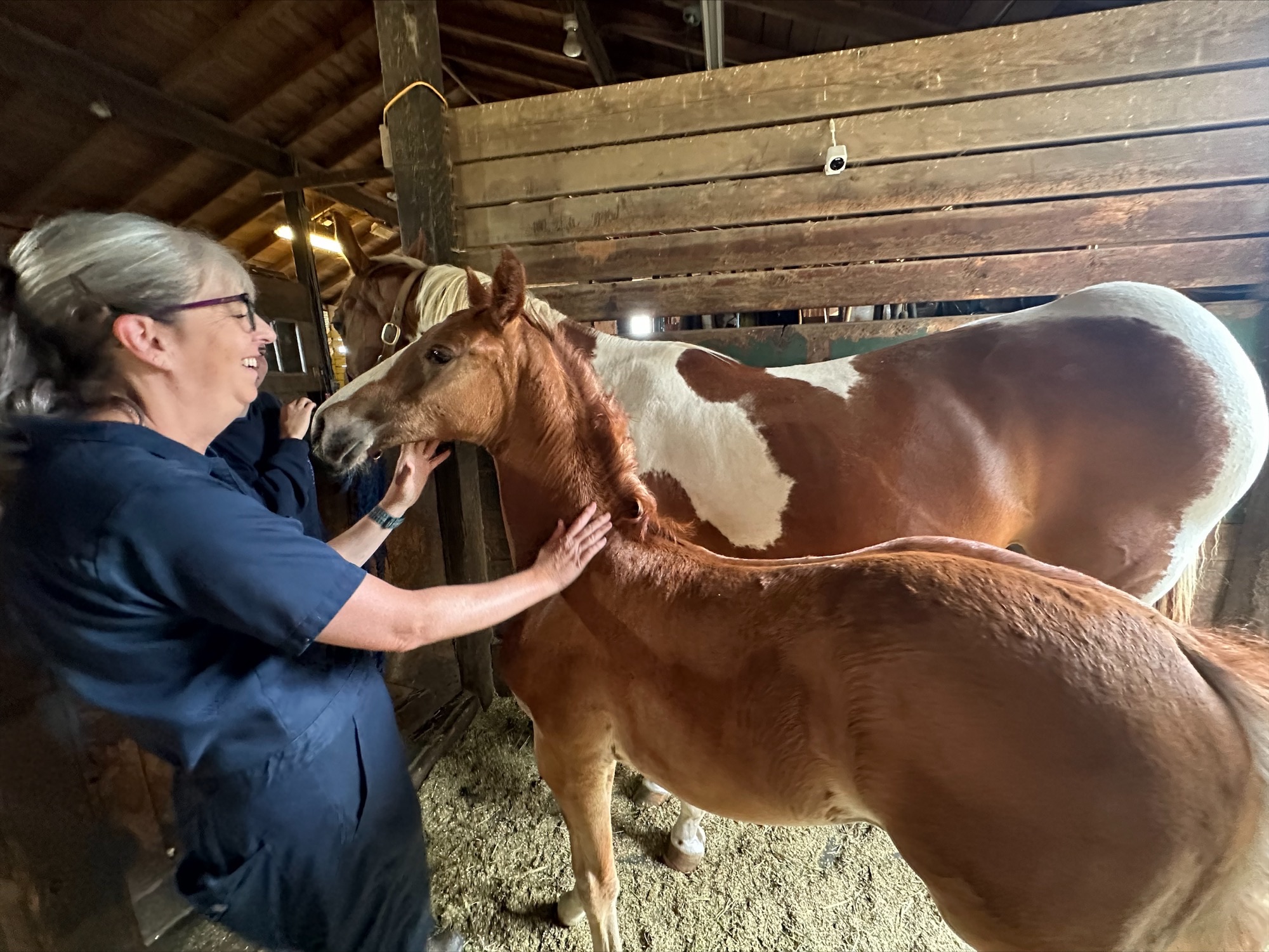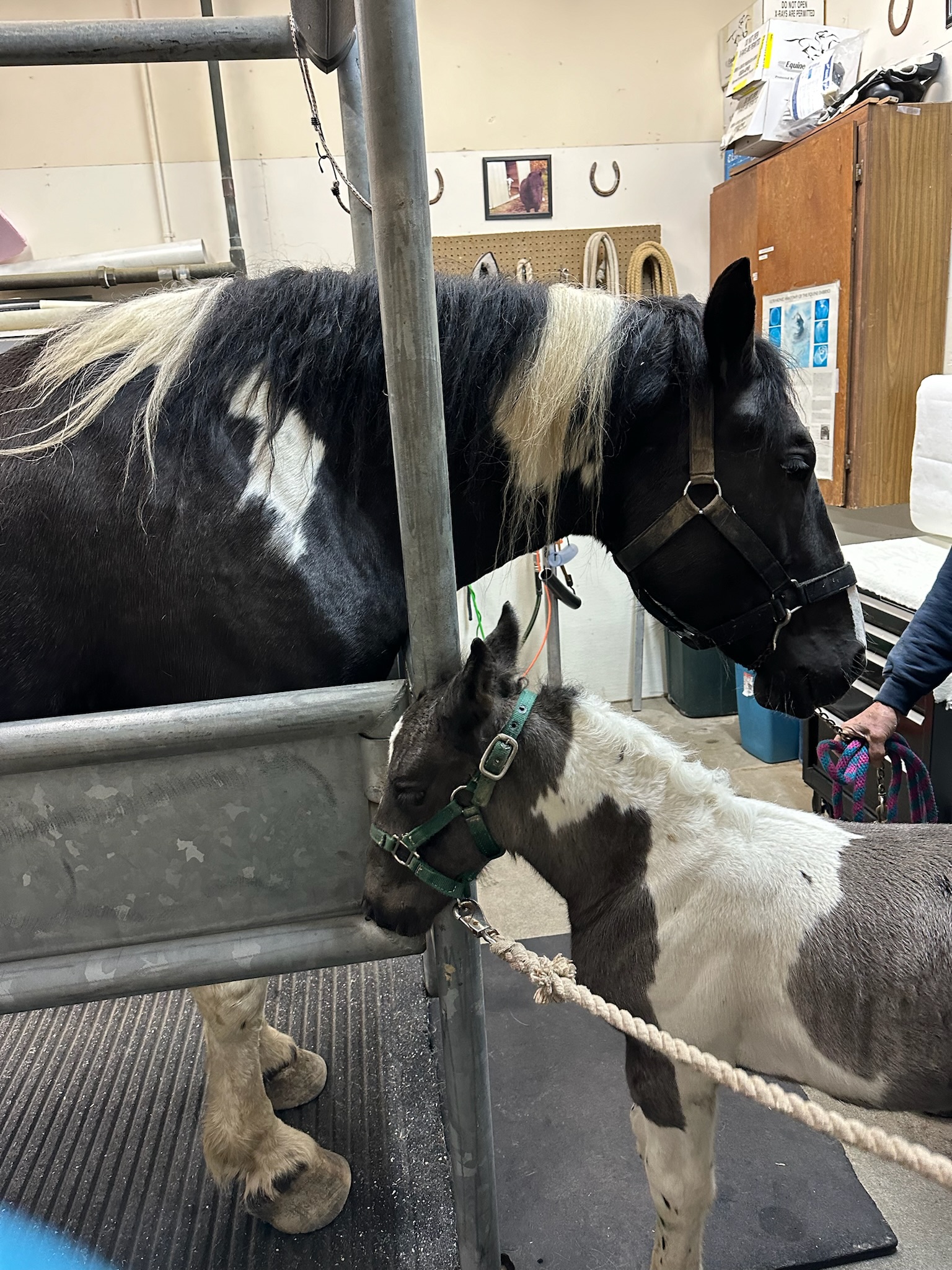H1 SEO Custom Title
Equine Reproduction
Prebreeding Diagnostics
There are a number of procedures that are useful and sometimes required prior to breeding.
- Prebreeding Culture and Cytology. Prior to breeding, it is important to make sure there is no infection in the uterus and most breeders require this test. The sample is collected after washing the mare’s perineal area by passing a long uterine culturette (a cotton swab on the end of a long guarded plastic rod). The sample is transferred to our laboratory to check for bacteria and evaluate the type of cells present. It takes 24 to 48 hours to get all of the results.
- Uterine Biopsy. With this procedure, a small sample of the uterine wall is sampled and evaluated under a microscope (histopathology). This information will help predict the fertility of the mare and is especially useful in older mares, in mares that have a history of reproductive problems and in broodmare prepurchase examinations.
- Staging Estrus. Rectal palpation and ultrasound can be useful in determining what stage a mare is at in her reproductive cycle. It can provide useful information about when to breed and whether she is more likely to have twins.

Artificial Insemination Services
Artificial insemination, particularly with shipped cooled semen, is become more and more common. A number of procedures can help coordinate collection and shipment of the semen with ovulation.
- Repeated rectal ultrasound examinations of the mare to follow the follicle and uterine changes.
- Hormone therapy often is utilized to help synchronize ovulation with insemination.
- Post breeding examination to confirm ovulation and determine if post breeding treatments are necessary.
Pregnancy Diagnosis
- Rectal ultrasound is used as early as 14 days post breeding to detect early pregnancy. Early diagnosis also is important to identify and reduce twin pregnancy. By 28 days, the fetal heart beat can be detected to help confirm the proper development of the embryo. Beyond 35 to 45 days, rectal palpation alone can determine pregnancy status, although ultrasound will provide more information about the development of the fetus and placenta.
- A “Pregnancy Planner” spreadsheet is available that, given the last breeding date, provides the owner with the mare’s due date, vaccination requirements, and other useful scheduled events.
Newborn Mare and Foal Checks
- Although pregnancy is a long and often uneventful time, delivery is remarkably fast with numerous critical steps. We have several handouts available and are always available to answer questions over the phone on what to expect and when to intervene during parturition and the early post partum period.
- Provided events are progressing as expected, we recommend a veterinary examination of the mare and newborn foal at 12 to 18 hours post partum to assess the placenta, measure the foal IgG levels and check over the mare and foal.


